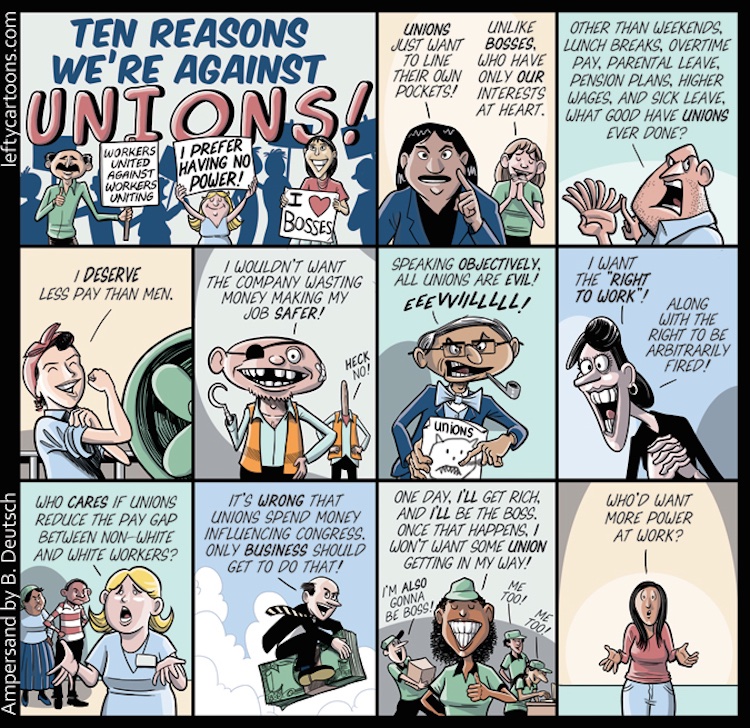We unions to rebuild the middle-class
Phil Mattera for the Dirt Diggers Digest
While its Build Back Better bill remains in limbo, the Biden Administration has been doing the smart thing by undertaking significant policy initiatives via executive order.
Such steps cannot redistribute income or
create big new social programs, but they can do some significant good.
That includes changes in the workplace. Biden recently signed an executive order requiring project labor agreements for all federal construction projects with a cost of $35 million or more.
This will ensure that these projects are carried out by well-paid and
well-trained tradespeople working with the protection of union contracts.
The order is not flawless. It contains exceptions that would allow agencies to forgo a PLA if they determine it would not advance “economy and efficiency” and under several other circumstances.
Hopefully, these loopholes will not be abused. It’s a good sign that the anti-union Associated Builders and Contractors put out a statement blasting the order, claiming it will “needlessly increase construction costs.”
Encouraging the creation of high-quality union jobs by federal
contractors is also part of a report just issued by the
Administration’s Task Force on Worker Organizing and Empowerment. The document
is an unabashed endorsement of unions as a force for raising living standards
and workplace standards.
It argues for positioning the federal government as a model for
cooperative labor-management relationships within its own workforce and for
using the government’s spending power to promote stronger labor standards in
private companies from which it purchases goods and services as well as in
organizations receiving federal grants and loans.
The Task Force also makes the case for increasing union density in the private sector overall. Yet without legislation such as the Protecting the Right to Organize Act, which is stalled in the Senate, the Administration is limited to providing indirect support.
The report includes a list of
recommendations such as getting the National Labor Relations Board to use the
web and social media to promote better understanding of worker organizing
rights under existing federal law. It also suggests that high-level
administration officials disseminate the same message through public service
announcements.
This is all laudable but unlikely to make much of a difference.
The main obstacle to worker organizing is not a lack of understanding of labor
law but rather the ability of employers to flout that law with no real
consequences.
More promising are the report’s recommendations concerning the
enforcement of labor standards. Strong regulation works hand in hand with union
organizing to exploitative working conditions.
Among the suggestions is a call for closer cooperation between
the Labor Department and the Internal Revenue Service to investigate worker
misclassification, a practice which not only undermines overtime pay rules but
also interferes with proper payroll tax collection.
Reading the report, one gets the impression that the Task Force
was trying to find every last way to use the federal government to help unions.
The laundry list includes numerous arcane ideas such as instructing the
Department of Education to include labor-management collaboration as a
criterion in awarding competitive grants.
After decades in which the spirit of the National Labor
Relations Act has been largely ignored by both Republican and Democratic
presidents, it is heartening to see an administration so driven to promote
labor rights. Yet it is going to take much more substantial measures to reverse
the decline of private sector unionization.

